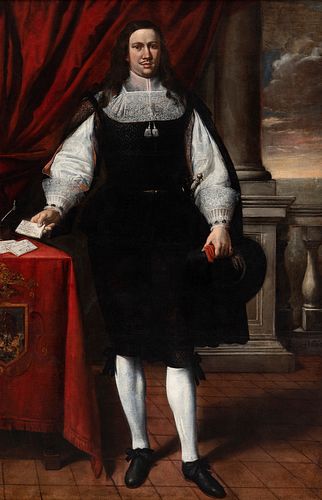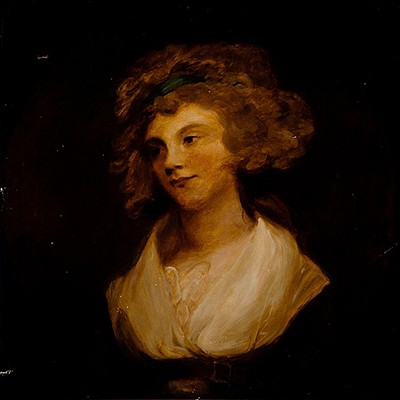CORNELIS SCHUT III, the young (Antwerp, 1597- Seville, 1655). "Portrait of Julian Rovereto", 1664. Oil on canvas. Relined.
About Seller
Carrer Aragó 346
Barcelona
Spain
Setdart Subastas was born in 2004 and is currently the first online art auction in Spain with solidity, prestige and reliability guaranteed by our more than 60,000 users. Setdart has a young, dynamic and enterprising team ready to successfully manage the purchase and sale of art works through custom...Read more
Two ways to bid:
- Leave a max absentee bid and the platform will bid on your behalf up to your maximum bid during the live auction.
- Bid live during the auction and your bids will be submitted real-time to the auctioneer.
Bid Increments
| Price | Bid Increment |
|---|---|
| EUR€0 | EUR€10 |
| EUR€200 | EUR€25 |
| EUR€500 | EUR€50 |
| EUR€1,000 | EUR€100 |
| EUR€3,000 | EUR€200 |
| EUR€5,000 | EUR€500 |
| EUR€10,000 | EUR€1,000 |
| EUR€20,000 | EUR€2,000 |
| EUR€50,000 | EUR€5,000 |
About Auction
Nov 25, 2021
Setdart Auction House sofia@setdart.com
- Lot Description
CORNELIS SCHUT III, the young (Antwerp, 1597- Seville, 1655). "Portrait of Julian Rovereto", 1664. Oil on canvas. Relined. Presents inscription on the identity of the character located in the letters arranged on the table. Dated in the central right area. Measurements: 220 x 141 cm; 234 x 157,5 cm (frame). The author of this work follows the classic parameters of the official portrait of the 17th century. To do so, he arranges the figure standing in the center of the composition, with regal bearing, looking at the viewer and demonstrating his social notoriety in a subtle but evident way. For this reason the protagonist is dressed in black, a color that symbolized wealth in the Spanish Baroque court. On his costume some delicate embroideries make up the sleeves and the collar of his blouse, which stands out for the transparency that allows to intuit the throat of the protagonist, in a display of technical mastery of the painter. In his left hand he holds a wide-brimmed hat and a red handkerchief, while in his right he carries a letter in harmony with the letters that are arranged on the table, which allow us to know the identity of the protagonist of the scene, Julian Rovereto and the location to which they have been addressed, Cadiz. During that time, mid-seventeenth century, Seville lost relevance in terms of foreign trade management, although the contracting house was still located in Seville, Cadiz was the most important port, which led to the transfer of officials and relevant characters to the city. As for the compositional arrangement of the work it is interesting to note how the author builds the floor in perspective to provide a greater specialty, or for example the use of the traditional red curtain that combines with an open space to a misty landscape that marks the sunrise. According to the study carried out by the Nicolás Cortés Gallery "this portrait by Julián Rovereto reflects the assimilation of certain portraits by his contemporary Murillo such as Portrait of Don Iñigo Melchor Fernández de Velasco in the Louvre or portrait of a gentleman from the Lowe Art Museum of the University of Miami". Cornelis Schut III belonged to a family of painters, in fact, his uncle, also a painter, had the same name. The young Cornelis moved to Spain during his youth, together with his father, who was a military engineer. Both settled in the city of Seville, known at the time as one of the most prolific ports in the world. His painting was closely linked to the work of Murillo, and he was also one of the founders, together with the master, of the Sevillian school, which he presided over for four years (1670-1674).
Dimensions:
INV Number:
220 x 141 cm; 234 x 157,5 cm (frame).
35272486 - Shipping Info
-
In-house shipping available. Please inquire at admin@setdart.com.
-
- Buyer's Premium



 EUR
EUR CAD
CAD AUD
AUD GBP
GBP MXN
MXN HKD
HKD CNY
CNY MYR
MYR SEK
SEK SGD
SGD CHF
CHF THB
THB

















